|
I get three kinds of emails about injuries in Baseball Mogul: 1) "Baseball Mogul has too many injuries. My entire pitching staff is decimated!" 2) "There aren't enough injuries. I got to the playoffs with none of my starters on the DL." 3) "Please make it possible for players to get injured in the middle of a game." I'm working on #3 and plan to release a patch in the next couple of months that adds this functionality to Baseball Mogul 2024. As for the first two, I get more complaints about there being too many injuries than about there being too few. This is true despite the fact that the rate and severity of injuries in Baseball Mogul is somewhat lower than in real life. The good news is that you can tweak injury rates yourself: To adjust the rate and severity of injuries that occur during the simulation, go to the League Menu and choose League Settings. The lower left section of this screen lets you increase or decrease 'Injury Frequency' and 'Injury Severity': "Injury Frequency" refers to the number of injuries that occur per season. "Injury Severity" adjusts the average length (in days) of each injury. The percentages shown are relative to the default setting. If the simulation is generating 500 injuries in a season, then changing "Injury Frequency" to "+20%" will increase the number of injuries to about 600 per season. Clearing All InjuriesIf you want to clear all injuries that have already occurred, go to the Tools Menu and choose Advanced Tools. Then click this button in the upper left part of that screen:
1 Comment
I’ve done a ton of research over the years for Baseball Mogul and Football Mogul and I think it makes sense to try to share it so it doesn’t get lost to the sands of time. Today’s post is about batters reaching base on an error. Most baseball simulations use the defense's stats to determine if a fielder commits an error — but ignore the fact that faster runners are more likely to reach base on an error than slower runners. Cal Ripken might bobble a hard ground ball to short. But if he keeps it in front of him, he probably still has time to throw out a runner like Cecil Fielder. Against a batter like Roberto Alomar, the same ground ball goes in the record books as a fielding error. To estimate this effect, I created two groups using data from 1980-2022. “Fast Runners” were defined as the top 20% of players ranked by Bill James’ Speed Score. I designated the bottom 20% as “Slow Runners”: Translated to Baseball Mogul, a player with a Speed Rating of 90 is about 50% more likely to reach base on an error than a player with a Speed Rating of 60. There's also a difference by handedness. Lefties start a step closer to first base, but right-handed hitters are far more likely to hit a ground ball to the left side of the infield (SS and 3B) where most infield errors are recorded. Overall, righties reach base on a error about 20% more often than lefties (after adjusting for running speed). This advantage is fairly consistent across all seasons. The difference is smaller before 1940, probably because hitters were less likely to pull ground balls. Two-Base Errors About 18% of the time that a batter reaches base on error, it’s due to a throwing error. Some of those throws let the batter reach second base. These two-base errors are much more likely with fast runners than slow runners: This isn’t a surprise. We’ve all seen fast runners take the turn and head for second on an overthrow. But a sim that only uses fielding stats to decide when errors occur (and what type) will fail to reflect this nuance of the game.
As part of an effort to improve the realism of historical replays in Football Mogul, I recently calculated the average punt distance for the last 72 seasons: There is a general upward trend, which I think can be explained by improvements in technique and training (similar to the improvements we've seen by field goal kickers). But there are a couple things that I can't explain:
I can't think of any rules changes or shifts in strategy that would cause these changes. If you have any theories, let me know on Facebook or by commenting here.
Football Mogul 24 has a "new simulation engine" with "normalized player ratings for true-to-life depiction of historical eras". But what do these words mean? Well ... it means I found some flaws in the way the game simulated historical seasons, so I rewrote a lot of the code to produce more realistic results. The best way to see the changes is to look at the numbers.
So, an average QB in 1995 will have a completion percentage a few points higher than an average QB in 1965. It also means that if you moved Troy Aikman from 1995 to 1965, his completion percentage will probably drop.
The last three (FG%, Rush TDs and Pass TDs) aren't shown on the Standings Page. But they were easy to find with a cool little feature I added this year:
This screen doesn't calculate the league-wide FG%, but it was easy for me to type the totals into a calculator to get the league's overall field goal success rate.
Today's email question: Is there any way to control how often players get injured in Baseball Mogul?
With this set to "+100%", this gap widens to about 50%. (These figures are averages — it's still possible for a team with the highest Medical Staff spending to experience a high number of injuries.)
|
Archives
April 2024
Categories
All
|
Company Links |
Franchises |
About |
|

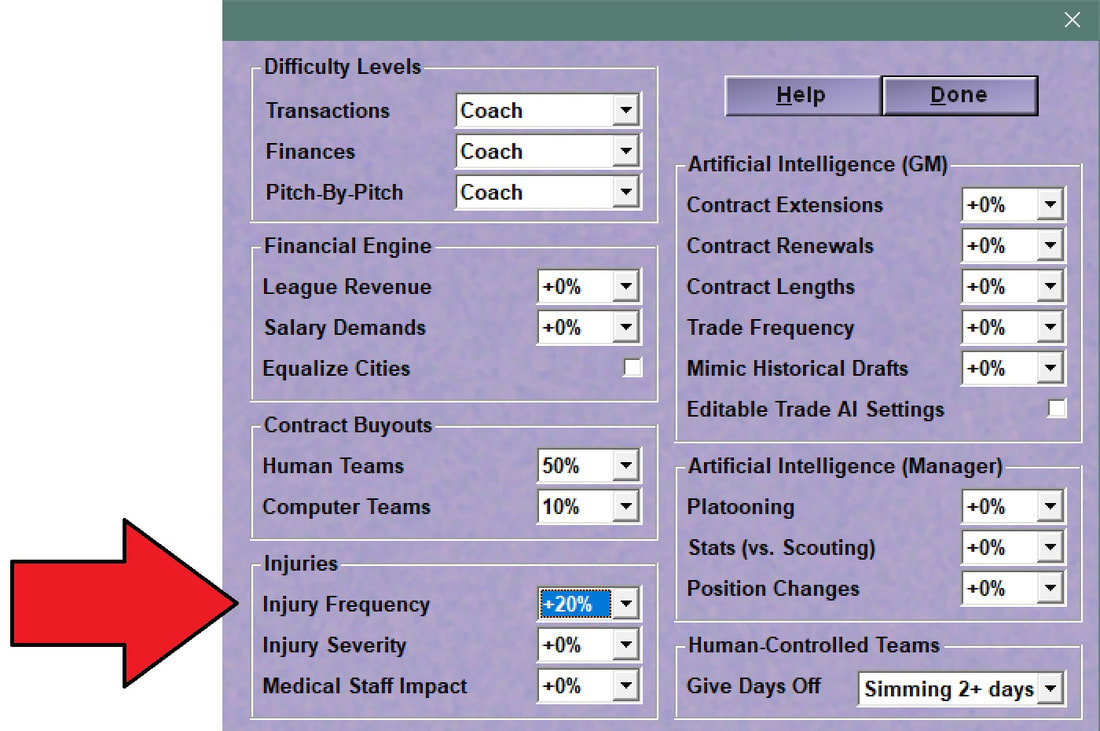

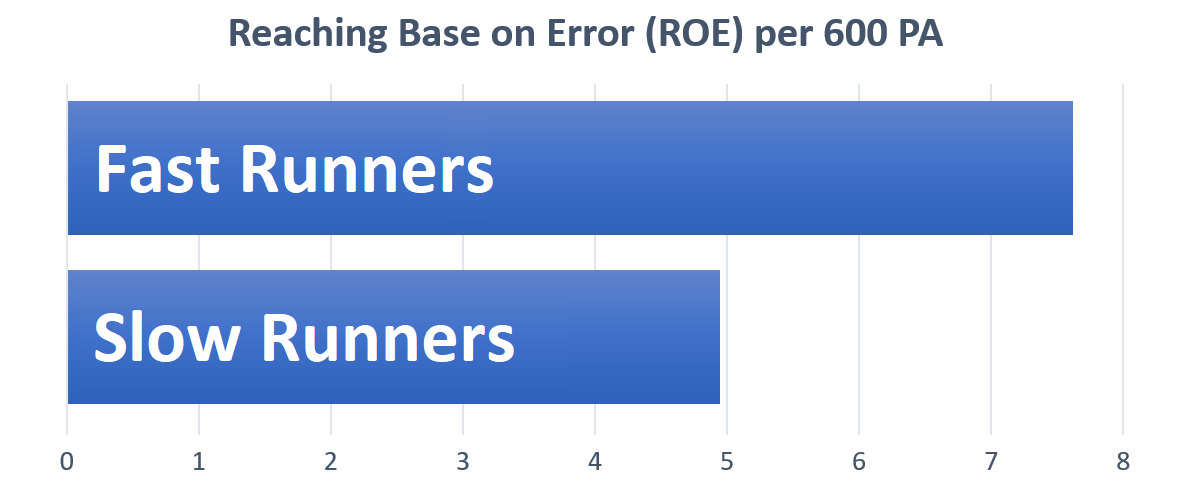
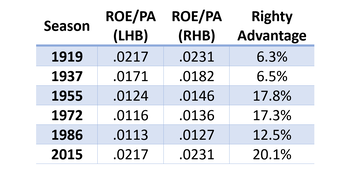
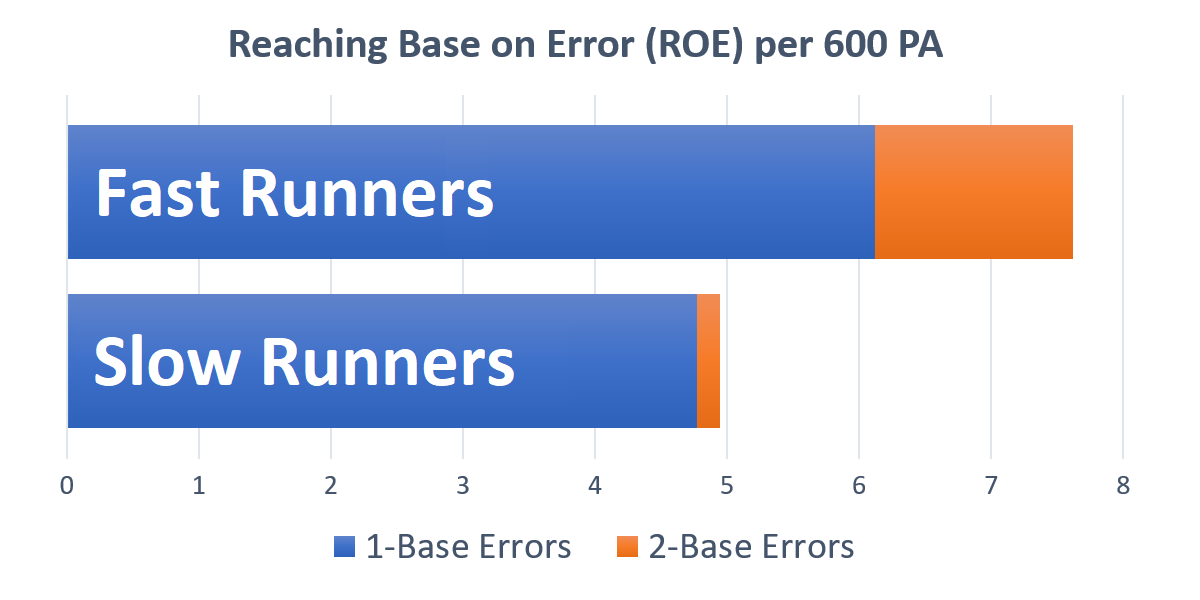
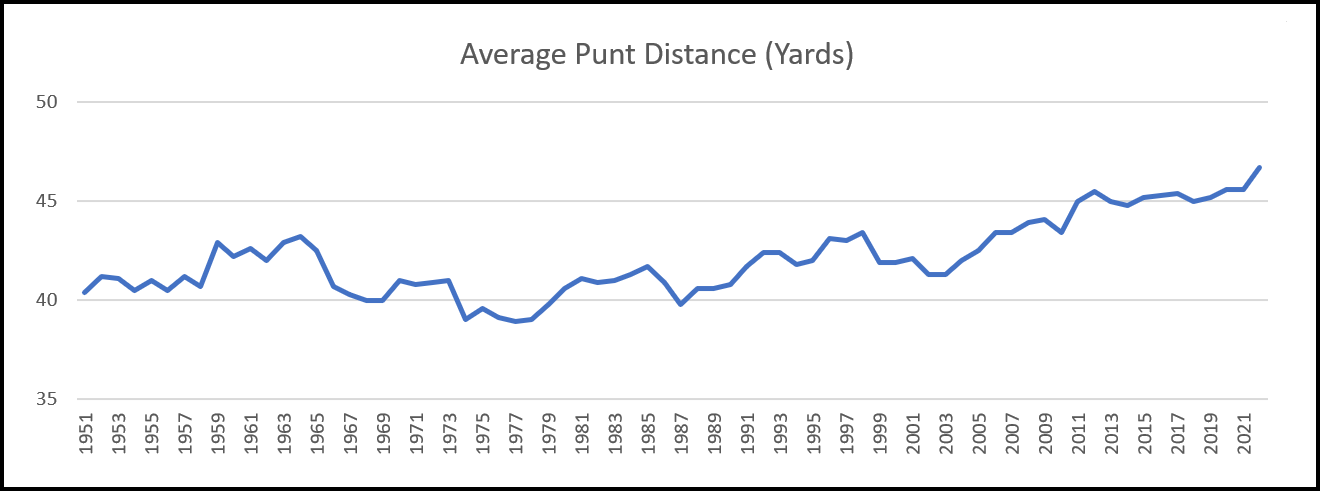
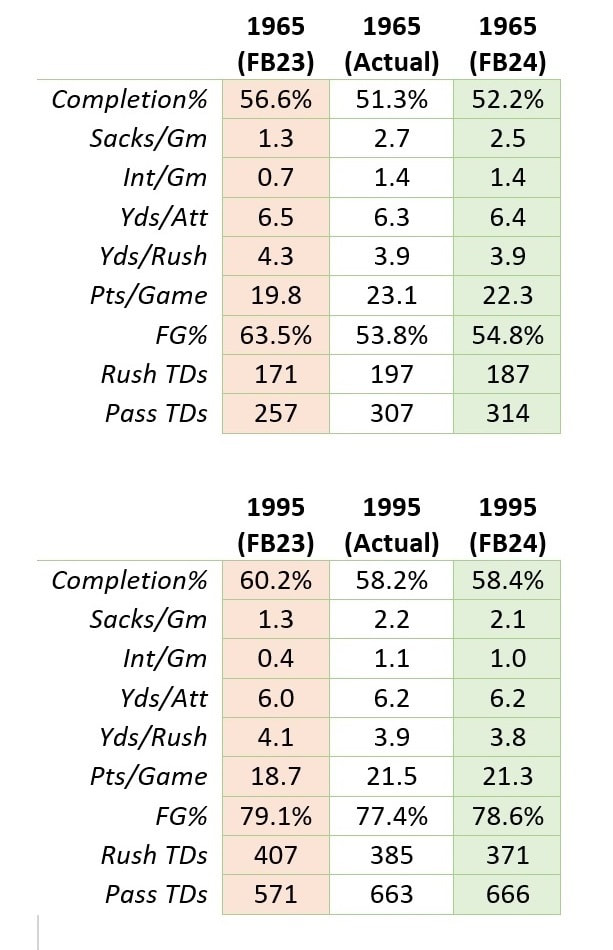
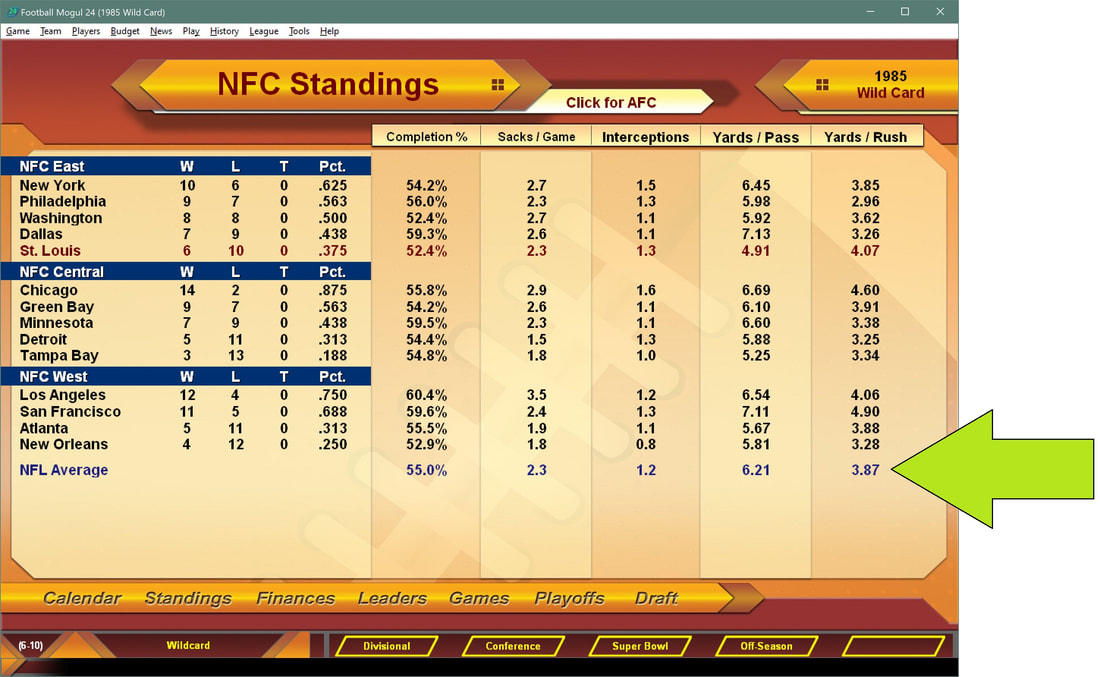
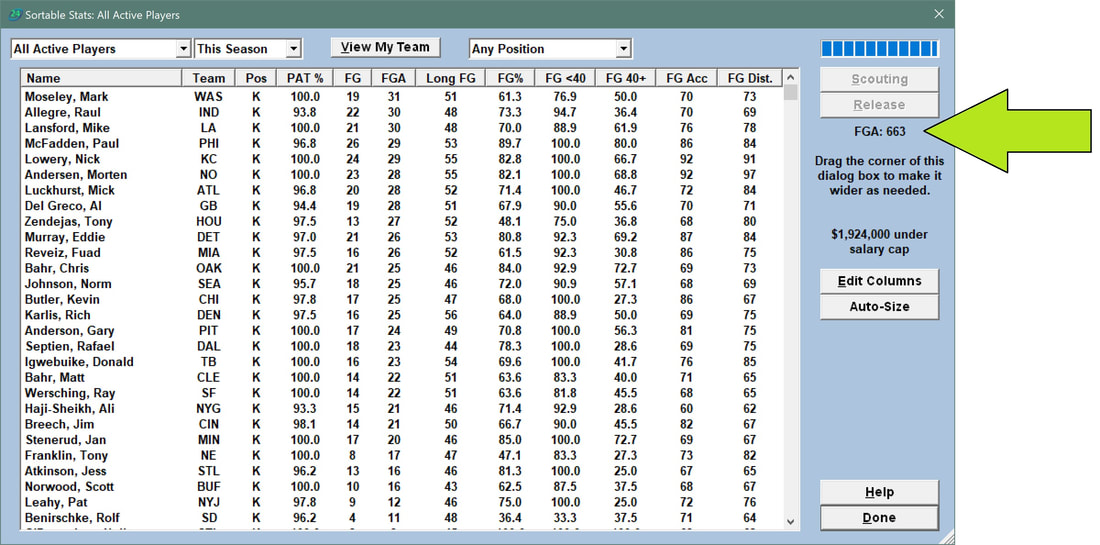
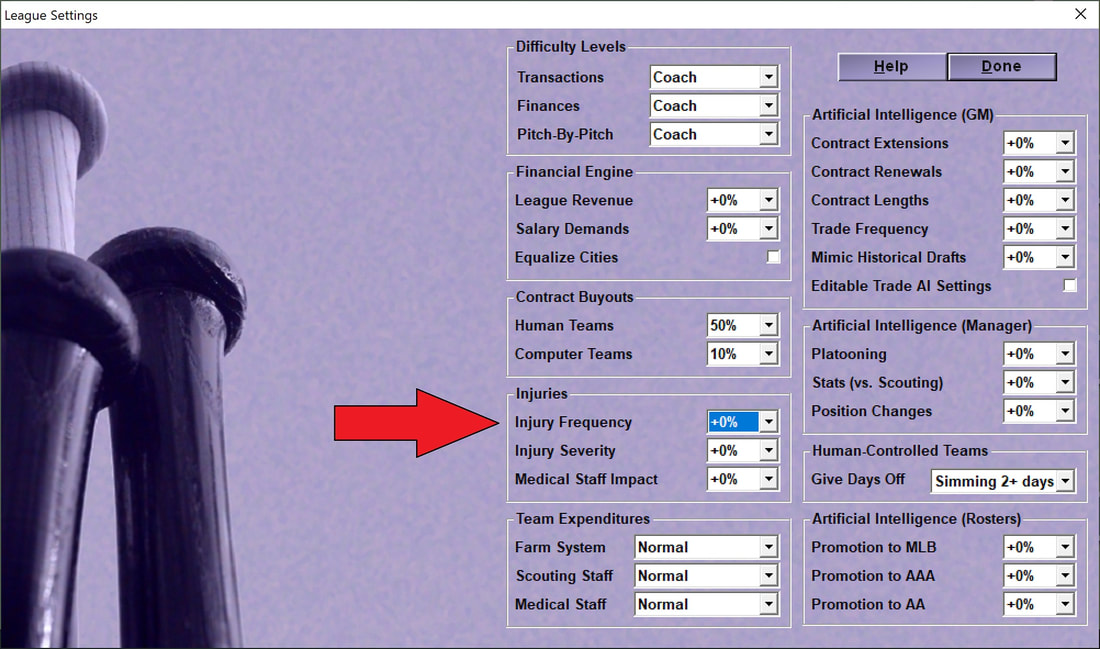

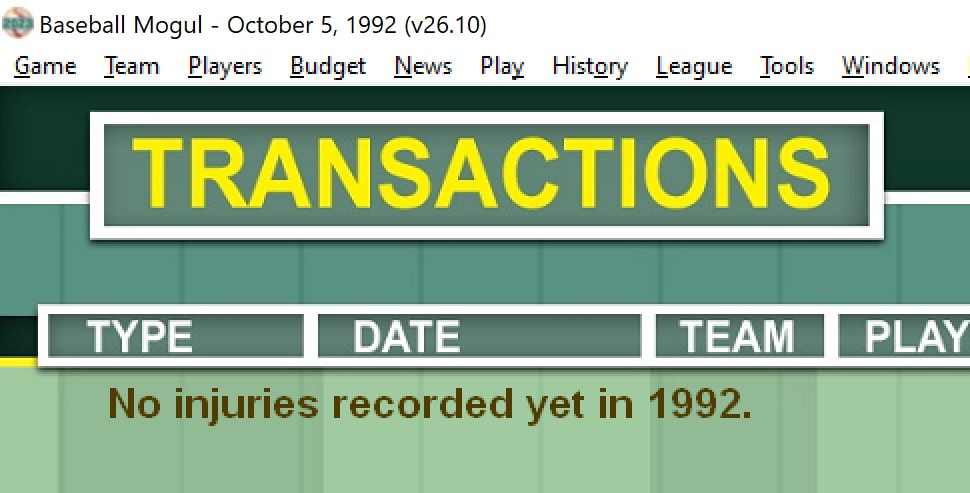
 RSS Feed
RSS Feed